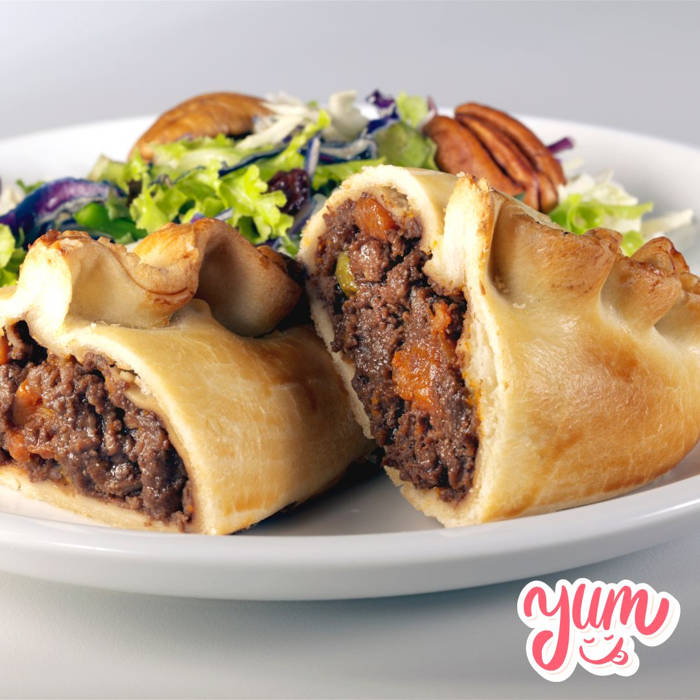
Cornish pasties are more than just a delicious snack; they are a symbol of Cornwall’s rich heritage and a true culinary icon of the United Kingdom. With their golden, flaky crust and hearty filling, these traditional pastries have stood the test of time, earning a well-deserved reputation both locally and globally. In this article, we'll explore everything you need to know about Cornish pasties, from their fascinating history to how they are made and why they hold such an important place in Cornish culture.
🏛️ A Brief History of Cornish Pasties
Cornish pasties have a history that dates back centuries, with roots deeply embedded in Cornwall's mining heritage. During the 17th and 18th centuries, Cornish tin miners relied on these robust pastries as a convenient and nutritious meal. The pasty’s crimped crust served a practical purpose—it allowed miners to hold their lunch without contaminating the food with their dirty, arsenic-laden hands. Once finished, they would discard the crust, ensuring they avoided ingesting harmful substances.
While pasties were primarily associated with miners, they were also enjoyed by farmworkers and laborers who needed a filling and easily transportable meal. Over time, the Cornish pasty evolved into a beloved dish, making its way beyond Cornwall and into kitchens worldwide.
🍽️ What Makes a Pasty ‘Cornish’?
The Cornish Pasty Association (CPA) has strict guidelines defining what can be legally recognized as a Cornish pasty. In 2011, Cornish pasties were granted Protected Geographical Indication (PGI) status by the European Union, meaning that only pasties made in Cornwall using traditional methods and ingredients can be labeled as Cornish pasties.
According to these regulations, a true Cornish pasty must:
✅ Have a distinctive ‘D’ shape with a crimped edge. ✅ Contain a filling of beef, potatoes, swede (rutabaga), and onion. ✅ Be uncooked when assembled and baked whole. ✅ Use no artificial additives or preservatives. ✅ Be made in Cornwall to qualify for PGI status.
This protection ensures that Cornish pasties maintain their authenticity and continue to represent the region’s rich culinary heritage.
🥧 How to Make a Traditional Cornish Pasty
If you want to enjoy a taste of Cornwall at home, follow this authentic Cornish pasty recipe:
Ingredients (Makes 4 pasties)
For the pastry:
- 500g (4 cups) strong bread flour
- 120g (1/2 cup) lard
- 120g (1/2 cup) butter
- 1 tsp salt
- 150ml (2/3 cup) cold water
For the filling:
- 400g (14 oz) beef skirt (cut into small cubes)
- 300g (10 oz) potatoes (peeled and diced)
- 150g (5 oz) swede/rutabaga (peeled and diced)
- 150g (5 oz) onion (finely chopped)
- Salt and black pepper to taste
- 1 beaten egg (for glazing)
Instructions
1️⃣ Prepare the pastry: Mix the flour and salt in a large bowl. Rub in the butter and lard until the mixture resembles breadcrumbs. Add water gradually and knead until a firm dough forms. Wrap and chill for 30 minutes.
2️⃣ Prepare the filling: Combine the beef, potatoes, swede, and onion in a bowl. Season generously with salt and pepper.
3️⃣ Assemble the pasties: Roll out the dough to about 5mm thick and cut out circles (around 20cm/8 inches in diameter). Place a portion of the filling in the center of each circle.
4️⃣ Crimp the pasty: Fold the dough over the filling to create a half-moon shape. Press the edges together and crimp by pinching and twisting the dough along the seam.
5️⃣ Bake: Brush with beaten egg for a golden finish. Bake at 180°C (350°F) for about 45-50 minutes until golden brown.
Enjoy your homemade Cornish pasties warm or at room temperature! 😋
🌎 The Global Love for Cornish Pasties
Although Cornish pasties originate from Cornwall, their popularity has spread across the world. Cornish miners who emigrated in search of work took their beloved pasties with them, introducing the dish to places such as the United States, Australia, Mexico, and South Africa. In Michigan’s Upper Peninsula, pasties became a staple, brought over by Cornish miners in the 19th century. Today, they remain a regional favorite in the area.
🎉 Cornish Pasty Festivals & Celebrations
Cornwall celebrates its iconic dish with various pasty festivals throughout the year. One of the most famous events is The World Pasty Championships, held annually at the Eden Project in Cornwall. This fun competition brings together amateur and professional bakers from around the world to showcase their pasty-making skills.
Another highlight is National Pasty Week, which takes place in February, where locals and tourists alike indulge in this delicious pastry and honor its cultural significance.
🍷 What to Serve with a Cornish Pasty
While a traditional pasty is a meal in itself, it pairs wonderfully with:
🥔 Mashed potatoes – for an extra hearty meal. 🥗 A simple green salad – to balance the richness. 🍺 Cornish ale or cider – for an authentic pairing. 🍵 A cup of tea – the classic British choice!
✅ Why You Should Try a Cornish Pasty
Still wondering why Cornish pasties are so special? Here are a few reasons to give them a try:
🔥 Hearty & filling – Packed with protein and carbs, they keep you full for hours. 🌍 Rich in history – Enjoying a pasty is like tasting a piece of Cornwall’s heritage. 👌 Easy to make – With simple ingredients, they’re perfect for home baking. 🎉 Fun to eat – Whether hot or cold, a pasty is always satisfying!
💛💛💛
Cornish pasties are more than just food; they are a symbol of Cornish identity, history, and tradition. Whether you’re visiting Cornwall or baking them at home, these delicious pastries offer a taste of the past with every bite. Their enduring popularity proves that sometimes, the simplest dishes are the most beloved. 💛
So, the next time you crave something hearty and comforting, why not enjoy a genuine Cornish pasty? You won’t be disappointed! 😉
